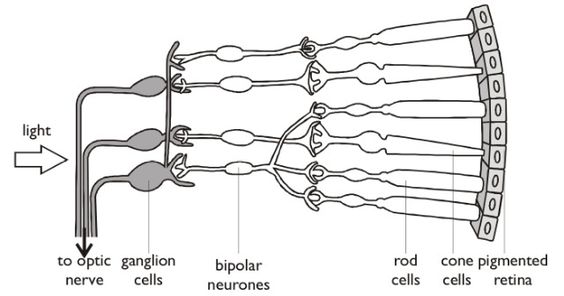Cones contain photochemical pigment called iodopsin which is sensitive to light of high intensity. The iodopsin is broken down to iodine and opsin bringing about depolarization which generates an impulse that is then transmitted to the brain via optic nerve.
Vertebrates with more cones are often see well during the day,because cones lack retinal convergence i.e each cone is linked to its own bipolar neurone hence high visual acuity.
Rods contain a chemical called rhodopsin which perceives light of low intensity and not sensitive to colour. They have retinal convergence thus lack visual acuity. Rhodopsin i broken to opsin and retinine [Vitamin A derivative] which brings about depolarization. Nocturnal animals have more rods on their retina in order to operate in low light intensity.
